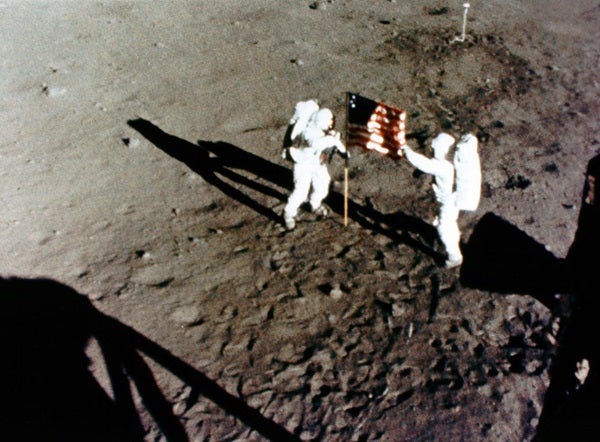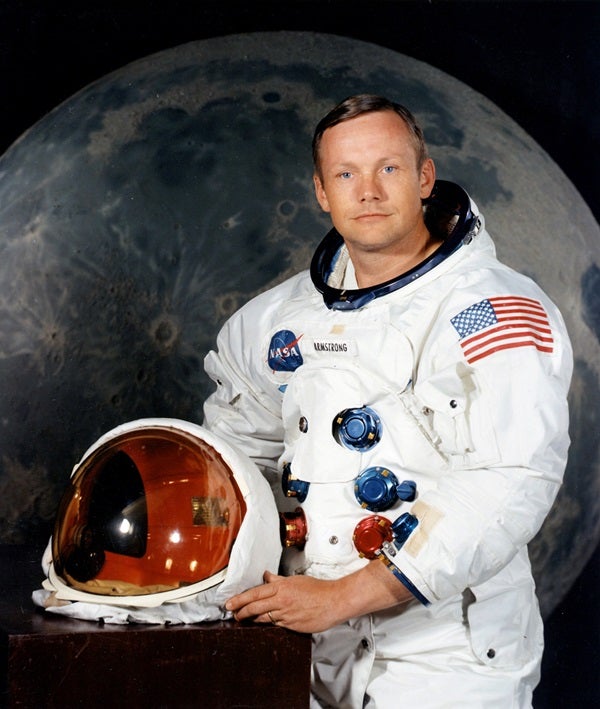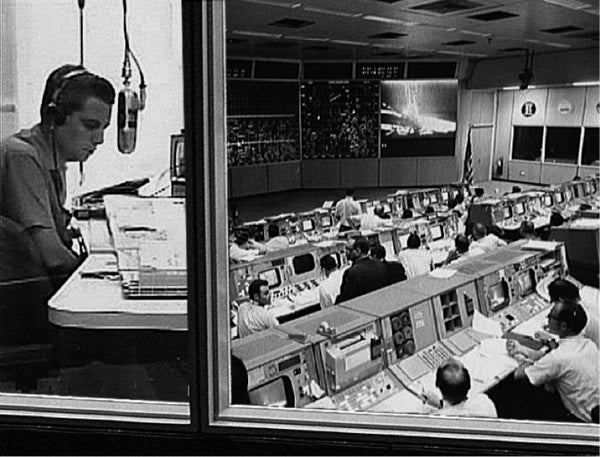Neil Armstrong stared out at the alien world beyond his lunar lander’s window. He was surprised at how quickly the dust, hurled away by the final thrust of Eagle’s descent rocket, had settled back on the surface. Within the single blink of an eye, the Moon had reclaimed itself as if it had never been disturbed, and Neil studied the desolation surrounding himself and Buzz Aldrin. No birds. No wind. No clouds — a black sky instead of blue.
It was obvious NASA had made the correct decision regarding who would be first to leave the lunar lander. Outfitted in his bulky spacesuit, boots, and backpack, there was no way Buzz could have maneuvered around Neil to the hatch. The commander simply had to be the first to leave and the last to return. Neil leaned forward, backing out, stopping on the porch with its large handrails leading to the ladder.
He moved slowly and steadily as if he had no place to go. The Moon had been waiting for 4.6 billion years, and Neil was in no hurry. Every move had to be precise, correct, no problems.
Way to go, Armstrong, he scolded himself as he dangled a foot over the rung and fell slowly to the footpad beneath him. But before he would take another step, he wanted to be sure he could get back up to the ladder. In the low gravity, he sprang with such force that he almost missed the bottom rung. He steadied himself. Satisfied he could handle the extra-long step, he descended back onto the footpad.
“OK, I just checked getting back up to that first step, Buzz. It’s not collapsed too far, but it’s adequate to get back up.”
“Roger. We copy,” acknowledged CapCom in Houston.
“It takes a pretty good little jump,” Neil told them before turning his attention to his dilemma. For some time, he had been thinking about what he would say when he actually stepped on the Moon. He had thought about one statement he judged had meaning and fit the historic occasion, and he ran it by his brother, Dean, and others close. Neil had not made up his mind.
He told me he was undecided until he was faced with the moment.
He reached up with his gloved hand grasping the ladder and then turned left, leaning outward. “I’m going to step off the LM now,” he said, lifting his left boot over the footpad and setting it down in Moon dust that shot up and outward in a fine spray — a spray that lasted only a quick instant in the absence of an atmosphere. “That’s one small step for man,” Neil said with a momentary pause, “one giant leap for mankind.”
Most didn’t know Neil had meant to say, “That’s one small step for a man,” and the loss of the a set off an argument for years to come. Had a beep in the transmission covered the a or some other loss of transmission wiped it from our ears, or had Neil nervously skipped the word?
Knowing Neil’s struggles with public speaking, I believe the latter, and with all the excitement and emotions of the moment, I’ve never been convinced Neil himself really knew for sure.
Jay Barbree is the author of Neil Armstrong: A Life of Flight (Thomas Dunne Books, 2014), from which this article is an excerpt.












